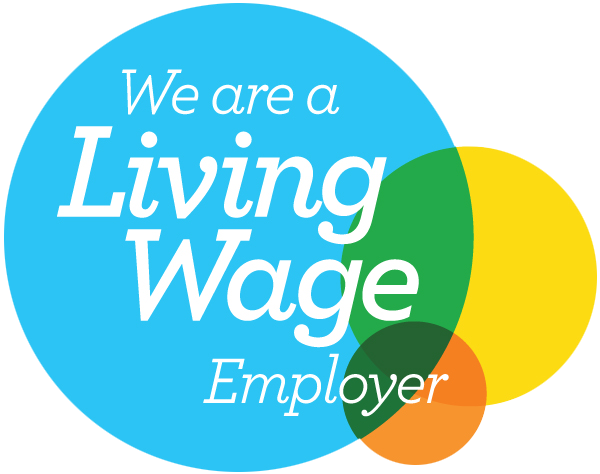
Since this blog was published at the end of January, there has been some confusion over whether organisations are legally required to submit their Gender pay gap report this year.
Gender pay gap reports are a very good way for you to communicate your culture and intent to make your environments more diverse and fairer as well as showing the progress you're making.
On the 24th March 2020, the Government Equalities Office (GEO) responded to the strain Covid-19 was putting on businesses, by suspending the legal requirement for organisations to publish Gender Pay Gap reports for the April 2019 snapshot date.
Despite the current situation not being any easier for many businesses, the GEO updated their website in December to clarify that only the 2019 snapshot report was suspended. Without explicitly stating the requirement, this clear message is there to remind organisations that they must submit their 2020 reports by 30th March for Public Sector and 4th April for Private and Third Sector organisations. By this date organisations with 250 or more employees are legally required to submit a compliant report to the GEO.
The GEO has not yet clarified whether organisation’s will have to submit their 2019 data, but with just over two months to the deadline it’s doubtful. So far, approximately 60 per cent of organisations have submitted their 2019 data.
On the 14th December, the Government Equalities Office (GEO) issued updated guidance on Gender Pay Gap Reporting. If you would like to review the new guidance, you can do so here. It is important to note that this is simply an update to the guidance, the legislation has not changed. However, the most notable new additions to the guidance are around furlough and action plans, which will apply to many.
There is now much needed guidance on how to treat Furloughed Employees. The GEO have confirmed that Furlough is a form of leave. You may know that the group of employees used to calculate your pay gap and your pay quarters is called your ‘Full-pay Relevant Employees’. To be excluded from this key group a Relevant Employee must have reduced pay or zero as a result of leave. Prior to 2020, the most common reasons to be excluded were long term sick leave and maternity/paternity/parental leave (after any initial period where many organisations pay full rate). Now, you should add Furloughed Staff to this definition (if you are not topping them back up to 100 per cent).
We know this might seem a bit technical, so here are a couple of examples to clarify:
Jenny is a Full-pay Relevant Employee and is featured in both the bonus and pay gap aspects of the report.
John is therefore NOT a Full-pay Relevant Employee because he received less than £4,500 and will only count towards:
Hopefully these examples help demonstrate the process you can follow.
The GEO now recommends that you add a supporting narrative and employer action plan to your gender pay gap report. The supporting narrative can run throughout the report to explain your view on why gender pay gaps exist in your organisation and what you’ve done so far to change that.
Publishing your action plan is a very public commitment to improving your gender pay gap. This is important, but remember if you are going to talk-the-talk in your pay gap report, make sure you walk-the-walk by making real improvements for your employees.
One of the first stages in our gender pay gap reporting process is to walk our clients through a thorough data audit and cleanse. This is an often overlooked, but vital first step in pay gap analysis and reporting. This is business intelligence; you shouldn't be making decisions with inaccurate data.
When you’re compiling a spreadsheet full of HR and payroll data, you run the risk of human error and of making mistakes. Without validating the raw data and comparing that to the calculated output you may introduce inaccurate hourly rates to your pay gap summary.
There is growing uncertainty among organisations who are getting ready to do their gender pay gap report over how the impact of Covid-19 will affect their figures. Furloughed employees, medical absence and redundancies will all affect the results and it may materially change the figures. So, what should you do? We recommend:
If you have already completed your gender pay gap report from the snapshot date in 2019 (which would have been due in 2020 had the legal requirement not been suspended) but have refrained from submitting, we encourage you to reconsider this. It is important to note that at the time of writing, you are not legally required to do this. However, this has never mattered more to your current and future talent, customers and investors. Your gender pay gap report is a major focus for these key stakeholders; don’t miss this opportunity to build their trust and increase transparency. This will be even more important if/when you begin ethnicity pay gap reporting, where disclosure rates are dependent on a culture of trust and excellent communication.
If you are in the slightly different position of not having started/completed last year’s gender pay gap report, we also encourage you to revisit this. Not only for the cultural imperatives of transparency and trust previously discussed, but to also complete your data set. Having a one-year gap will prevent you from seeing the full picture of your organisation. Revisit last year's report and gain a more accurate insight as to how the representation of women and men has changed in your organisation.
Gender pay gap analysis is vital business intelligence, especially in this uncertain, fast-changing societal and business environment. Aside from the legal obligation, there are many benefits to organisations undertaking gender pay gap analysis. Researchers at McKinsey have warned that the pandemic could reverse progress on gender equality, so pay gap analysis is vital to understand how the representation of women has changed and is changing.
Spktral are trusted partners of Paydata and have supported many of our clients with their gender and, most recently, ethnicity pay gap analysis and reporting. Their mission is simple: to Empower Equal Futures.
Spktral’s mission is to make it as easy as possible for you to transform your HR and payroll data into insightful pay gap analysis. This enables you to make evidence-based people decisions about your most valuable asset – your people.
Their focus is your pay gap reporting - specifically gender, ethnicity and disability. You get access to their easy-to-use platform, flexible consulting with pay gap specialists, and online resources, to help you throughout your entire pay gap journey.
To find out more, ask a question, or book a free consultation, visit Spktral’s website or contact sabrina@spktral.com.
18 January 2021
2020 was defined by the pandemic and ongoing restrictions have continued into 2021, impacting daily ...
1 June 2020
In March the UK government suspended enforcement of this year’s obligation for employers with 250 ...
Sign up for briefings on pay benchmarking, salary surveys, reward strategy and statistical updates.
sign up for updates
© Paydata Ltd 2025 All rights reserved.
Registered in England no: 3632206
VAT no: 728 0808 28
Paydata Ltd, 24 Commerce Road, Lynch Wood, Peterborough, Cambridgeshire, PE2 6LR

